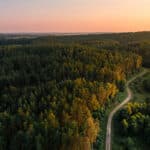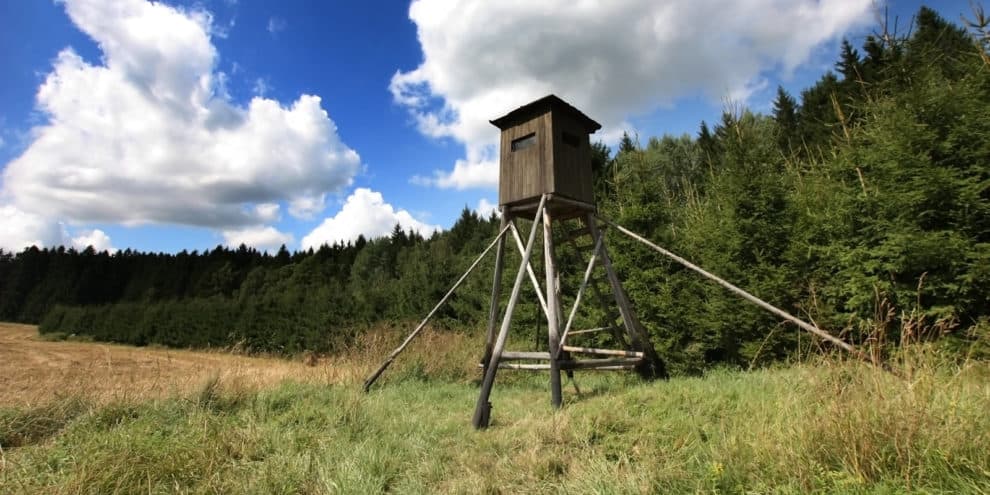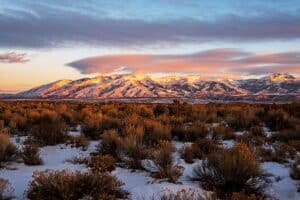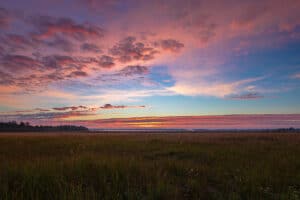America’s rural landscapes offer countless opportunities for people from all walks of life to use and enjoy. These uses range from around the clock high-end commercial farming operations to spending time with friends and family on the weekend. One use associated with our nation’s rural landscapes dates back to the beginning of mankind and is a practice that has not only helped sustain our existence but also helped shaped the culture, heritage, and economies of many rural communities throughout the country. This use is the time honored tradition of hunting and for many Americans hunting is much more than a pastime; it is a lifestyle for millions of families which plays a significant role in the rural land market. According to a 2006 survey by the U.S. Fish & Wildlife Service, hunting is a $22.9 billion a year industry that is financed by 12.5 million hunters. Of these 12.5 million hunters, 7.2 million are hunting private land exclusively. These statistics shed light on the fact that hunting is a cherished recreational endeavor and participants are willing to invest substantial capital for quality hunting ground.
As the recent economic downturn draws to a close, the rural land market is upside down with regards to the value of timberland. This market trend has created a dilemma for many timberland owners as they reassess timber management plans in order to compensate for current lumber prices. Compounding this scenario is the uncertainty of the future timber market. Historical analysis supports the argument that timber prices will recover just as they have in the past. For many timberland owners with realistic short-term goals, waiting on the possible recovery of timber values is not the only option for mitigation.
Current landowners who have witnessed the value of their timber holdings diminish over the last five years should seek to take advantage of current recreational buyers who have emerged from the sidelines following the recent presidential election. These buyers are looking to capitalize on a market that has not only bottomed out, but is also on the brink of recovery and many of these buyers are searching for hunting tracts with a valuable feature – habitat diversity. Rural properties that offer a variety of wildlife habitat tend to stand out thanks to excellent resident wildlife populations. This argument is important to sellers due to the historical trend that buyers in the market for quality hunting tracts are often more inclined to negotiate on price when they recognize that a property has good habitat diversity in place and therefore offers immediate high-quality hunting opportunities.
Landowners seeking to diversify their property from a wildlife habitat standpoint have several options to choose from. Clear-cuts, merchantable pine stands, mast trees, ponds, impoundments, native grasses, warm and cool season food sources, and prescribed burns & thinnings on existing timber stands are all excellent methods of implementing habitat diversification. Other types of habitat that are either impossible to recreate or can’t be done at a reasonable cost include swamps, marshes, sloughs, flooded timber, creeks, rivers, & pastures. If possible, owners of rural land that lack habitat diversity should consider acquiring adjacent parcels that offer these habitat features at current market values; doing so could create a legitimate solution to recoup some of the value lost from timber holdings much sooner than a full-scale timber market recovery.
For buyers looking to invest in a hunting property, habitat diversity is commonly at the top of a requirement list. In many instances, rural land lacking this feature will be passed over by potential buyers even if the property offers every other aspect a prospect is looking for. Opportunities to enhance habitat diversity exist for the majority of rural land parcels and establishing these features can lead to a pleasant selling experience for landowners.
This content may not be used or reproduced in any manner whatsoever, in part or in whole, without written permission of LANDTHINK. Use of this content without permission is a violation of federal copyright law. The articles, posts, comments, opinions and information provided by LANDTHINK are for informational and research purposes only and DOES NOT substitute or coincide with the advice of an attorney, accountant, real estate broker or any other licensed real estate professional. LANDTHINK strongly advises visitors and readers to seek their own professional guidance and advice related to buying, investing in or selling real estate.










Add Comment